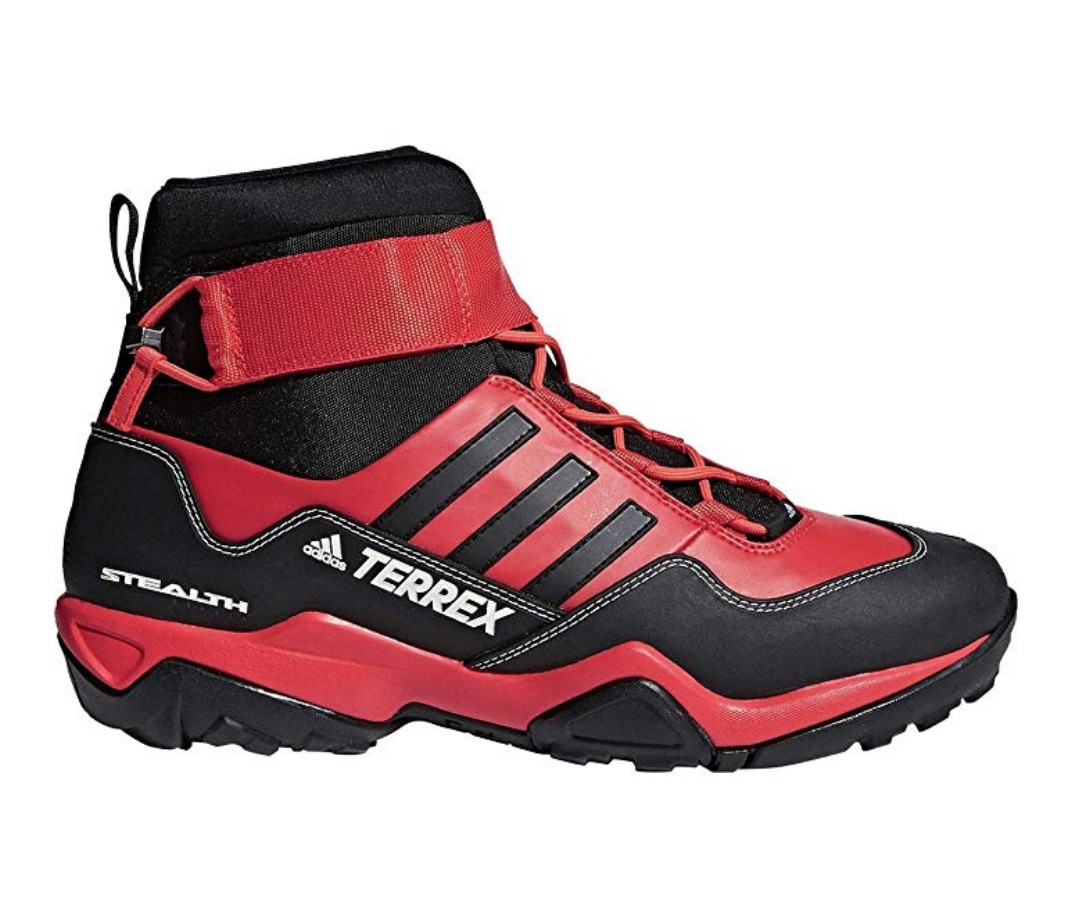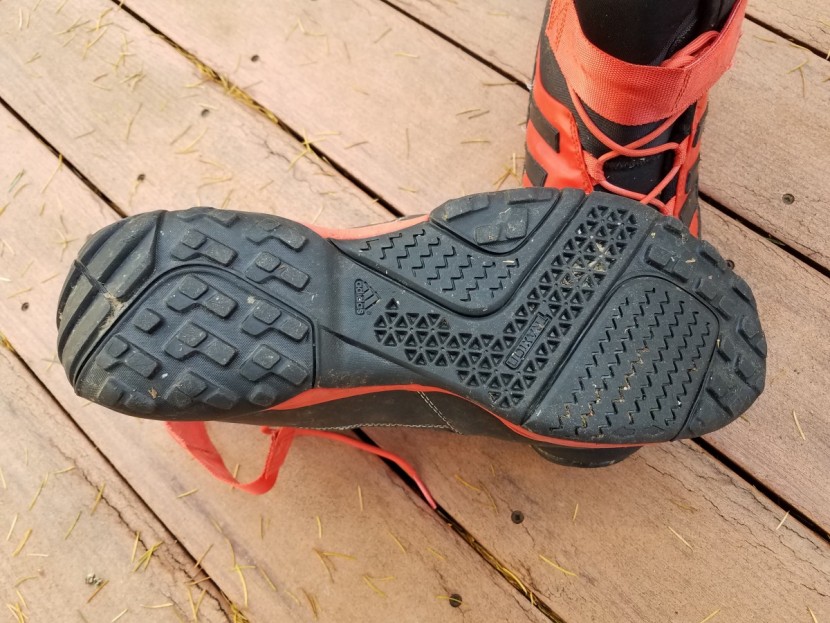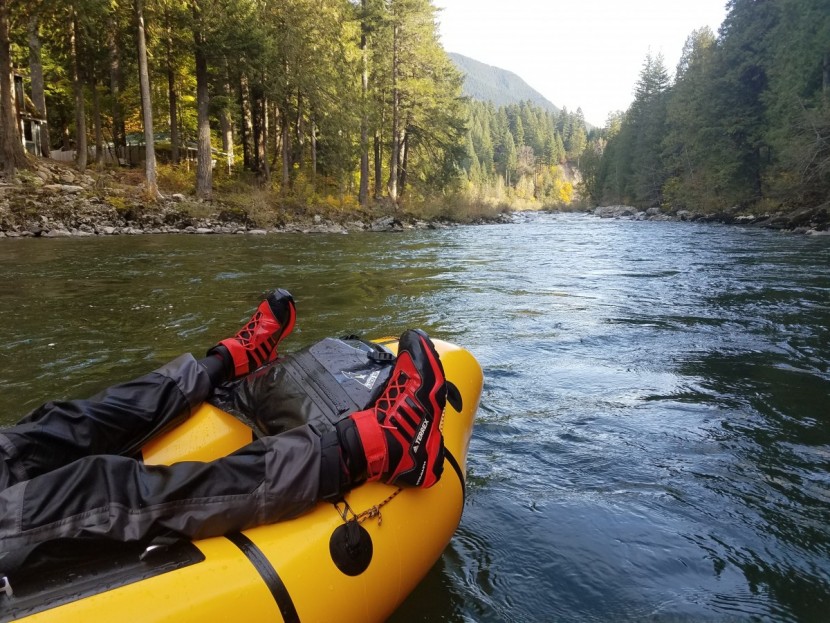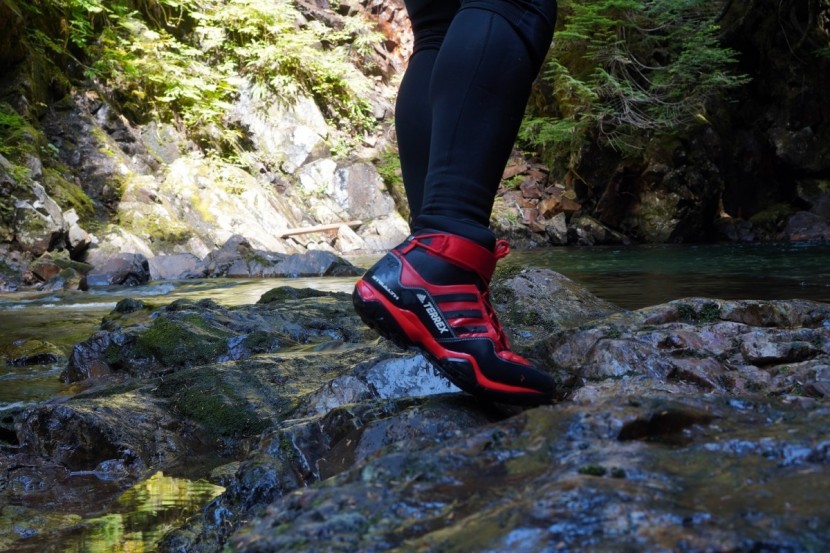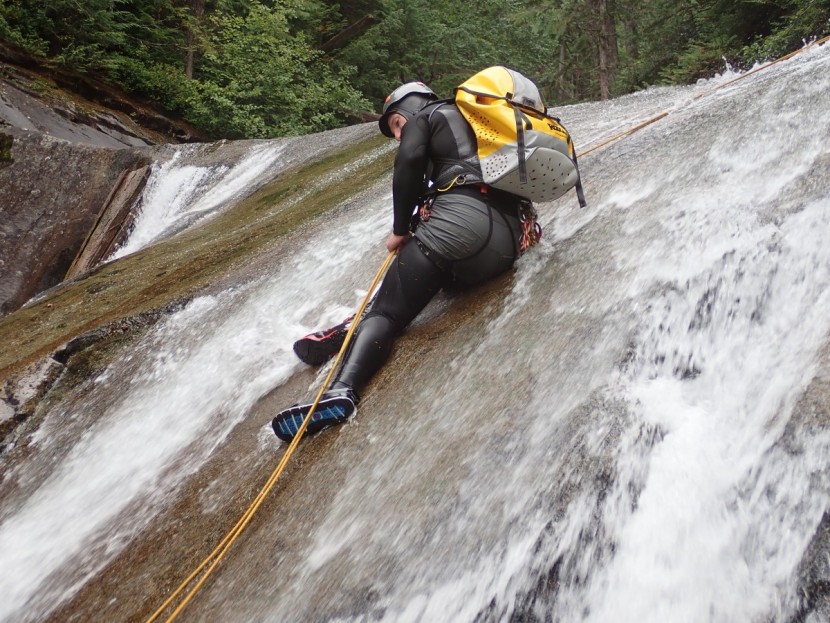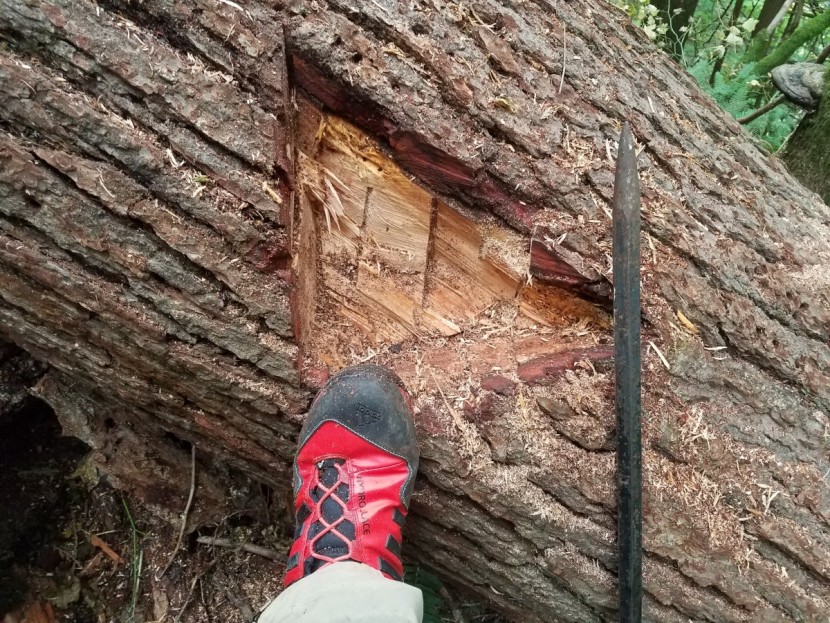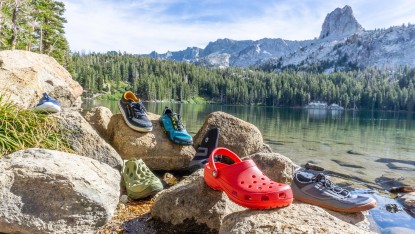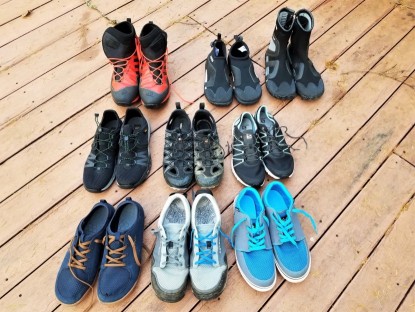Adidas Terrex Hydro_Lace Review
Our Verdict
Our Analysis and Test Results
The Hydro_Lace is one of the burliest water shoes we've tested. It features thick uppers made of a stiff, PVC-like material over warm neoprene, bonded to a cushioned midsole and moderately stiff outsole. Lacking drainage and weighing in at close to 3 lbs for a pair, these are purpose-made shoes that excel at wet canyoneering but are probably too heavy, too stiff, or just too burly to be ideal for kayaking or just spending time around the water.
Comfort
Unlike most other water shoes, the Adidas Hydro_Lace are built similarly to a midweight hiking boot, with an ankle collar, moderately stiff sole, and moderate stack height. The neoprene lining helps smooth out seams, so the interior is largely very smooth and somewhat cushy, making it very comfortable. With the right size, it can be comfortable with anything from thick socks to bare feet. Even on long hikes, we never developed hot spots or blisters.
The stiff, PVC-like material on the upper wraps around most of your foot, providing excellent protection. Whether jammed in cracks, shoved between the tubes on a raft, or just stepping over cobbles on a river bed, your feet feel pretty much the same, which is awesome. Unfortunately, that also means that it's pretty difficult to get a tight, form-fit with these shoes. Similar to a leather hiking boot, they not only require a couple of days to break in but also are pretty difficult to tighten down around your entire foot. That said, we rarely hear complaints from canyoneers about these shoes fitting poorly.
All this comfort in the water, unfortunately, doesn't equate to a very comfortable shoe for drier activities, or around camp after a day of boating. Built like a drybag with a neoprene sock on the inside, these have no drainage, and the neoprene inners soak up tons of water. After long hikes out of canyons, your feet will definitely still be wet, which can lead to problems if you're in the water day after day. On long trips, we generally don't expect these to ever dry out. In contrast, lighter, better-draining shoes tend to be a lot more comfortable to wear around camp and shed water weight much faster.
Traction
When testing traction, we were excited to see if any of the water-specific, razor-siped soles in our test group would beat out good old Stealth rubber for keeping us upright on wet rock. We found the Hydro_Lace to be extraordinarily sticky on wet, smooth rocks and logs. We consistently reached for this shoe for canyons in which an inadvertent slip could have consequences. For portaging or scouting rapids, we loved being able to stride across boulders and logs confidently. And, for a swiftwater rescue course, we liked being able to confidently post up to throw a line or do some rigging.
The Hydro_Lace features a variable tread design that balances traction on soft and hard surfaces. With deeper, more widely spaced lugs in the back, and much smaller, inverted lugs in the front, it keeps you from slipping while descending steep banks but also gets a lot of rubber in contact with the rock when smearing.
Warmth
While not technically a bootie, these shoes are easily just as warm. The lacing and fold-over tongue allow for a huge range of adjustability (although this is limited on the tight end by the stiff upper). We have used a pair of these shoes with anything from a thin synthetic sock to 4 layers of socks (inner liner sock, inner thick wool sock, drysock, then outer thin synthetic sock) without feeling like the boot doesn't fit.
The warmth of this boot comes in part from the removable insole. For inflatable kayaking on cold days, we like to remove the insole and pack in the insulation around our foot (i.e., lots of sock under our drysuit socks). That leaves us with a ton of dead air space around our feet while we are in the boat, keeping our feet warm and happy.
The lack of drainage minimizes water movement through the shoe in comparison to more mesh-heavy water shoes. In side-by-side tests in frigid Pacific Northwest canyons, we consistently found these boots to be warmer than shoes that have drainage, even with lots of insulation in those shoes.
Versatility
While excellent for wet canyons, these boots are almost overkill for some other activities where drainage is important or where such a burly boot just isn't necessary.
They perform very well in whitewater, especially for times when portages or scouts are sketchy or common. For swiftwater rescue, they provide traction and protection that is really nice for things like quickly getting settled on shore to throw a line, doing tricky shallow water crossings, or clambering around on log jams. For kayakers, though, a bootie or low-profile kayaking shoe can achieve almost as good traction, but also provides high sensitivity and lower drag in the water.
These boots don't perform as well for lower-intensity activities, such as hanging out around camp on a raft trip. They don't have the drainage to be really comfortable away from the water. While they work fine for hiking, water shoes with better drainage tend to be kinder to the feet and can be similarly supportive.
Sensitivity
Because these shoes focus heavily on foot protection and stability, they really sacrifice when it comes to flexibility. The Adidas Hydro_Lace have a moderately stiff sole (after break-in!). We could feel cobbles and rocks, but not nearly to the degree we could in more kayaking-focused, highly flexible water shoes. For canyoneering, this is preferable, as it really sucks to bruise or sprain your foot in the middle of a canyon.
While swimming, the ankle collar prevents you from getting any sort of a kick like you can get with low-cut, low-profile kayaking shoes or booties. They also float, which can be sort of interesting when sitting in the water. Unless you plan on spending a lot of time swimming, this isn't that big of a deal. And, when you're unintentionally out of your boat and moving fast downstream, it can be nice to be able to kick off obstacles confidently. That said, these boots may not even fit in some hardshell kayaks.
For inflatable boats (rafts, packrafts, and inflatable kayaks), these perform well, as they can support the foot on small foot pegs or the edge of a cooler. The stiff heel cups can be wedged in confidently between tubes, but don't expect to be able to wrap your feet around rounded surfaces or get much feedback through these shoes.
Durability
Our lead tester used to go through 1-3 pairs of shoes every year canyoneering until he found these boots. They are probably among the most durable water shoes (if not shoes, period) on the market. They feature a solid construction and redundant glue and double stitching along most seams. After jamming them in cracks, sliding down abrasive rock, and putting them through dozens of wetting and drying cycles, they hold up nicely.
While Stealth rubber is probably the stickiest out there, it is very soft. After a month of use, we noticed some wear on the tread. However, the tread pattern is already pretty smooth, so this isn't that big of a deal.
Commonly, these boots tend to experience failure in the strap that holds down the laces, which has an exposed piece of elastic that can get eaten up as it rubs against rock. The laces are also somewhat poor quality, and they tend to fray and break after a few months of use.
Value
Perhaps in part because Adidas has more or less cornered the market for canyoneering shoes in America, they can get away with charging a lot for these boots. Due to their durability, these boots will last a long time, and that might be enough to justify their relatively high price. They can also be difficult to find at American retailers, so trying them on to get the right size can be tricky.
If you are a canyoneer and jumps, slides, and hydraulics are common features in the canyons you like to do, or if you demand ultimate performance and protection in whitewater, this boot is a superb choice and an acceptable value. For water sports that require more comfort out of the water, or if you need a lower profile shoe, you can achieve great performance at a price that is 2/3 to 1/2 as much as these boots.
Conclusion
As a burly, very high-traction, and very protective boot, the Adidas Terrex Hydro_Lace shines in rough environments. We heartily recommend them to canyoneers and boaters who need to feel confident moving over rough, wet terrain. For most other applications, though, a lighter or better-drained shoe is probably a better bet.


